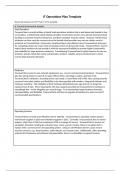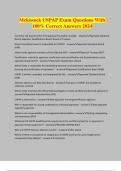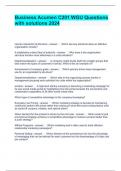IT Operations Plan Template
Record all responses to C927 Task 1 in this template.
A. Current Environment Analysis
SaaS Operation:
TreasureChest currently utilizes a hybrid SaaS operations solution that is web based and hosted in four co-locations. A hybrid SaaS cloud solution provides on-premises services via a private cloud and cloud bursting to a private cloud for temporary, overflow computer resource needs. However, hybrid cloud solutions can have security concerns since the hosted cloud provider may not use similar security protocols as TreasureChest. Conversely, cloud bursting is cost efficient since TreasureChest only pays for computing resources it uses when accessing services on the private cloud. TreasureChest’s current hybrid cloud solutions do not provide it with the necessary flexibility to provide higher functionality and reliability for large-business customers. Transitioning TreasureChest’s hybrid cloud to its own on- premises, private cloud data center will provide a modern, reliable, secure infrastructure to meet current large-business demands.
Hardware:
TreasureChest owns its own network equipment, e.g., servers and processing hardware. TreasureChest also has wiring closets in each of its major offices (Paris, San Diego, London, and New York.
TreasureChest’s hardware, according to the case study, is most likely end-of-life, thus causing security concerns from cyber-attacks and flexibility to be interoperable with modern, integrated software and hardware solutions. The reliability of their hardware diminished years ago and can no longer be replaced once it fails. More importantly, the data capacity provided by TreasureChest’s hardware is exceedingly low—in the Megabits per second range. To accommodate larger-business demands, interoperability, and flexibility, TreasureChest will have to upgrade all hardware to meet current IT recommended specifications.
Operating Systems:
TreasureChest currently uses Windows Server 2003 R2. TreasureChest’s operation system passed mainstream support in 2010 and extended support in 2015. Currently, TreasureChest has no vendor support, other than IT full time employees (FTE) to manage its servers. TreasureChest’s servers are unreliable; therefore, limiting its customer base. Once a server crashes, there is no option but to replace with a current server and operating system. Using an old Windows Server causes severe security concerns, e.g., data breaches, cyber-attacks, and ransom ware. Additionally, older operating systems limit hardware and software interoperability: there is no flexibility to expand services. Networks:
TreasureChest has a global network infrastructure with its Paris office hosting TreasureChests ERP, email, and messaging system—a large portion of its software systems. Since French law prohibits TreasureChest’s employees from working on weekends, TreasureChest has a third party, OnsOne Ltd, to assist in network monitoring during off hours. Together with OnsOne Ltd, TreasureChest’s network is monitored 24/7 along with 24/7 management of its SaaS systems. TreasureChest’s reliance on a third party for network monitoring limits TreasureChest’s scalability to meet large business demands for functionality and reliability. In addition, a third-party may not provide as excellent customer service
that TreasureChest’s large-business customers' desire.
Software:
TreasureChest’s SaaS was developed in-house in 2007 using Java and Python language. TreasureChest continues to write its own applications software and has two dedicated locations (Paris and Minsk) with software engineering teams at each. However, these two locations utilize two different software development life cycles (SDLC) methodologies: Waterfall and Agile. The different methodologies are in direct contradiction and not conducive for company application growth. Both methods have advantages and disadvantages; however, since TreasureChest is wanting to become scalable for large business customers, the Agile method would successfully accommodate software flexibility, growth, and attraction for larger businesses. Conversely, the methodology within Agile is currently Scrum. Scrum methods are short iterations and must complete the original tasks at all costs. Additionally, since TreasureChest seeks growth from large business customers, TreasureChest should implement Kanban instead. Kanban is extremely flexible and can change daily, therefore, meeting the needs for large business customers.
Database:
TreasureChest uses an SQL database, such as Microsoft Access, for easy communication between the database and its application...also hosted by TreasureChest. Furthermore, the Sales and Marketing departments at TreasureChest use Salesforce as a customer resource management (CRM) database; however, each department has its own version of Salesforce with no interoperability between the two.
Additionally, Salesforce (CRM database) has no integration into TreasureChest’s ERP system and business services. Since TreasureChest’s disparate database management systems (DBMS) are not interoperable, TreasureChest is unable to efficiently manage customers; therefore, TreasureChest is not adequately equipped for large customer scalability, flexibility, and reliability.






